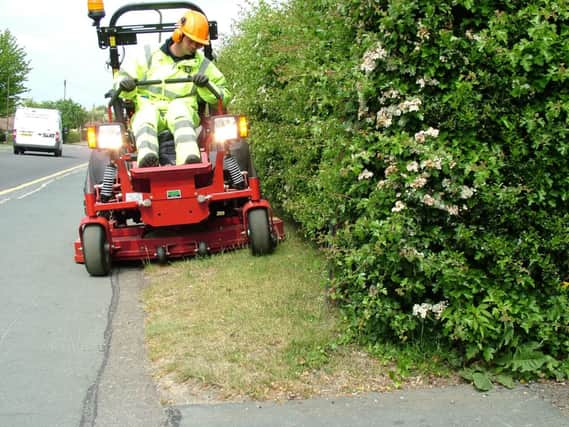“Don’t expect bowling green quality grass cutting”


While many parish and town councils will for the first time handle grass cutting in urban areas, Bucks County Council is still responsible for the majority of highway verges, shredding through around 30 million square metres of grass, equivalent to the lawns of about 71,000 homes.
Mike Freestone, the county’s director of transport services said: “TfB is set up with new machinery, a robust programme and a competent workforce, so we are set to ensure that the grass cutting is carried out efficiently, effectively and on programme.
Advertisement
Advertisement
“Please do not expect a ‘bowling green’ type cut, however, we must be realistic about the cutting process and understand that safety requirements such as visibility at junctions comes first.”
The council said the grass is cut in rural areas to ensure traffic, pedestrians and road signs can be seen. This season, two cuts will be carried out, with a further cut taking place at bends and road junctions, specifically considering road safety.
The first cut will take place in May/June, with the second in July/August. The further cut around junctions will take place in September/October 2015.
Roadside verges in the county provide a habitat for many rare species of flora and fauna, some of which are identified as areas of ‘special botanical interest’. These areas will not be cut between March 1 and the end of August so that plants can flower.
Advertisement
Advertisement
In the autumn the verges will be cut to remove the deadheads and help spread the seeds.
Responsibility for grass cutting in urban areas is now largely in the hands of parish councils in the Vale after an agreement was struck to devolve it, with Bucks County Council giving money towards it. This includes Aylesbury, Buckingham, Winslow, Coldharbour, Watermead, Stewkley, Bierton, Dinton, Quainton, Mursley and Stone.
Where the county council does still perform this task six cuts are planned to take place in urban areas across the county, which started on the March 30 with the first cut will take approximately six weeks to complete.
The second cut will take approximately five weeks, and the remaining four cuts will take four weeks each, reflecting the normal grass growing rate through the cutting season.
Advertisement
Advertisement
Nine dedicated gangs will operate across the county, each gang cutting the equivalent of four football pitches every day.
The council has brought in new machinery, able to operate under a wider range of conditions including thicker and damper grass than in previous seasons.
It said grass cutting is still weather dependent, however, and therefore ‘some flexibility in the programme may be required, with the safety of the operatives paramount’.
The council has issued guidance for the public to help them get the best cut possible:
> Please do not park on grass verges;
Advertisement
Advertisement
> Please do not place stones or logs on verges as these can be dangerous;
> Please let TfB know about any junction where visibility is blocked by long grass/weeds or overgrown hedges.
> Contact TfB if you recognise any noxious weed such as Japanese Knotweed or Ragwort on the highway verge.
> Remove your wheelie bin from verges as soon as possible after it has been emptied.
Advertisement
Advertisement
Information on TfB’s grass cutting programme, along with frequently asked questions, can be found on its website www.buckscc.gov.uk/grasscutting. The programme can also be found on their maps, where you can see the areas that have already been cut, and those programmed for a visit within the next 3 weeks - http://www.transportforbucks.net/Public-Maps-Page.aspx.